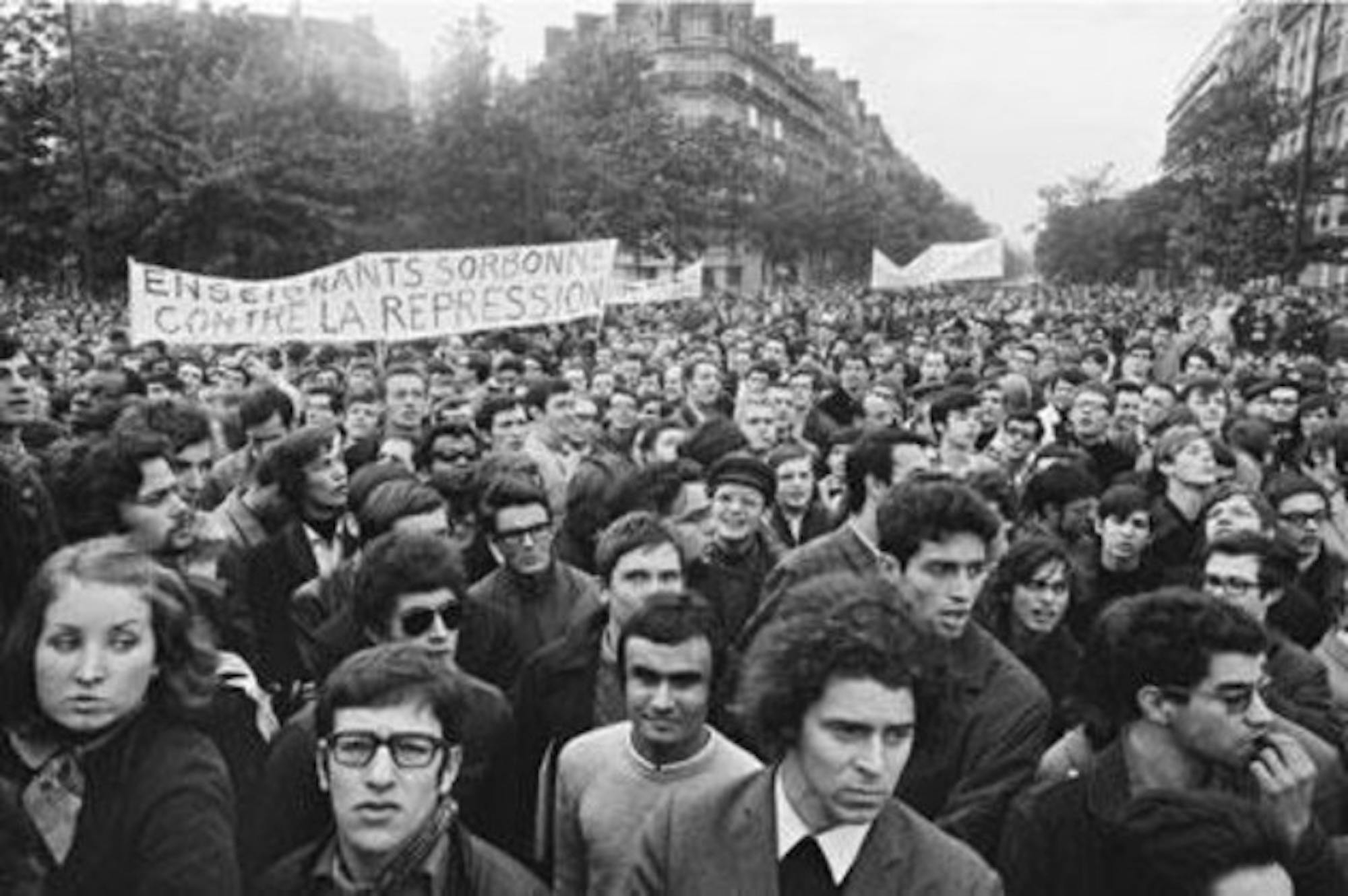These images of protest and upheaval in Paris, captured by French photojournalist Serge Hambourg during the tumult of May 1968, are among the 35 photographs on display through Nov. 19 in the Hood Museum of Art's Harrington Gallery.
The exhibit's photographs, originally taken for the Parisian weekly magazine Le Nouvel Observateur, captures the spectrum of French experience during May 1968, ranging from portraits of student notable Daniel Cohn-Bendit to candids of riot police.
"While I was a journalist," Hambourg said, "I had always worked as a documentary reporter, but at the same time as a photographer seeking to make personal creative work." The result is vivid and startling, as the onlookers' faces (some earnest, some eager) and the smooth cobblestones (visible only around the policemen) emerge distinctly and expressively.
1968 was a year that resounded with political tensions throughout the world. It was the year of the Prague Spring and the Russian invasion of Czechoslovakia, the year of the assassinations of Robert Kennedy and Martin Luther King, Jr. In France, the month of May in 1968 erupted with student protests against President Charles de Gaulle's conservative administration. From Nanterre to the Latin Quarter, the streets of Paris brimmed with millions of demonstrators whose banners and graffiti urged their neighbors to "read less, live more," to "be realistic, demand the impossible." These sentiments soon spread throughout much of France and, by May 13, had amplified into a general strike, in which more than two-thirds of the French workforce participated.
When police intervened, tensions escalated, and the situation became mired in violence. "My photographs don't show violence; some of them are even tender," insisted Hambourg. "It is true that I am interested in those 'at the margins' of events: for example, rather than showing the demonstrators burning a car, I would prefer to show the consternation of the spectators." He elaborated that there was also the danger that the police might recognize the protestors from the photographs.
"My sympathy was with the students and their grievances rather than the political establishment," Hambourg admitted. "George Pompidou, who was Prime Minister in 1968, would at the outset of his later presidential campaign set as a priority [that] every housewife would have a washing machine. This was his view of the future!"
The energy and agitation of May 1968 are preserved in Serge Hambourg's photographs, prismic chronicles of the past that prove an intriguing foil to the present. "I was [...] trying to make memorable images," he explained, "not only by recounting the event but also by taking a true photograph, which in separate context could stand by itself." This insight into the complex relationship between art and life is undeniably the key to Hambourg's success.
Kicking off the series celebrating Hambourg's work, the opening lecture "Protest in Paris 1968" will be delivered by co-curator M. Anne Sa'adah, Joel Parker Professor of Law and Political Science in the Government department, on Friday, Oct. 6 at 4:30 p.m. in the Arthur M. Loew Auditorium. A reception will follow in the Kim Gallery, hosted by the Friends of the Hopkins Center and the Hood Museum of Art. Serge Hambourg will discuss his experiences in his talk "Paris 1968: Photographing the May Events" on Saturday, Oct. 7 at 2 p.m. in the Harrington Gallery.
On Friday, Oct. 27 at 4:30 p.m., Alyce Mahon, Lecturer and Fellow in Art History at Cambridge University will present a lecture on "May 1968 and the Apotheosis of Surrealism" in Loew Auditorium.
Other programming includes the screenings of "Tout va bien" and "Letter to Jane," two 1972 films by Jean-Luc Godard and Jean-Pierre Gorin, on Saturday, November 11 at 2 p.m. These films represent the political situation and cultural spirit of France in the late 1960s and early 1970s. Lynn Higgins, Chair of the French and Italian Department, will introduce the films and lead a post-screening discussion.




